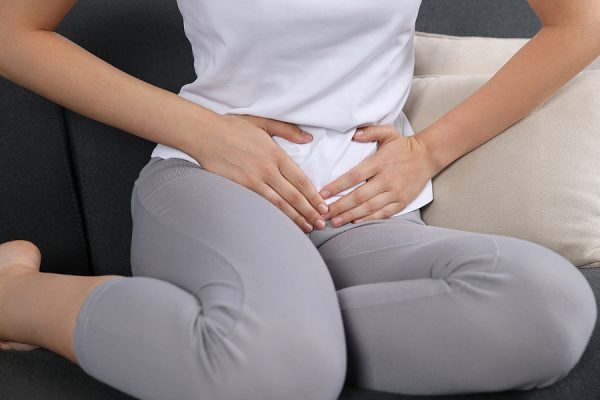My heart always goes out to stroke patients. One minute they’re perfectly fine. The next thing they know they are waking up in the hospital in complete confusion.
Then the recovery process starts… rediscovering language skills and re-training your body to cooperate with simple movements. It’s a very scary experience that nobody wants to go through in their lifetime.
In general, your lifestyle plays a very large role in your stroke risk. Regular physical activity, a healthy diet, limited alcohol intake and not smoking are the four most important factors that can protect you from a stroke.
But they aren’t bulletproof. And there are some stroke triggers that you may not be aware of.
Any type of infection can increase your chances of suffering a stroke within the next 90 days, even infections that seem relatively minor like an ear, skin, urogenital, eye or dental infection.
This may sound far-fetched, but there is a very simple underlying explanation for it. You see, infections trigger systemic inflammation. This, in turn, leads to impaired endothelial function and excess blood clotting over the next several months.
Two Most Common Infections that Increase Stroke Risk
While any type of infection can activate this inflammatory response, there are two kinds of infections that appear more threatening than others.
The first is urinary tract infections. And men, don’t think you’re immune! Even guys get these kinds of infections. (Plus, UTIs often plague men who have an enlarged prostate gland.)
During the first seven days after a UTI, you carry more than a five times increased risk of an ischemic stroke. Your chances of an intracerebral hemorrhage (a blood vessel burst) go up, too.
While you may not always be able to avoid a UTI, you can reduce your chances of getting one.
Drink plenty of water, keep your genitals clean, urinate after sex and pee whenever you need to go. Don’t hold it, or it can lead to a buildup of bacteria. Women, in particular should wipe front to back and avoiding wearing tight pants that can trap bacteria.
The other chief stroke-triggering infections are flu-like illnesses. It might be the actual flu that triggers the event. In some cases, it might be something like pneumonia or COVID. Other times it’s just an infection that has flu-like characteristics such as bronchitis, laryngitis, a sore throat or even a cough.
These types of illness increase your odds of suffering an ischemic stroke nearly three-fold over the next 15 days… and remain high for the next 60 days. Oddly enough, the short-term risk of a stroke after a flu-like illness is particularly high in people under the age of 45.
Maintaining a strong immune response can help you avoid flu-like illnesses. But again, nobody is bulletproof… not even people who receive the flu shot or COVID vaccine.
Since it is impossible to avoid the random UTI or viral infection, what can you do to protect yourself?
Quick Action May Protect You from Stroke after an Infection
The minute you become aware of ANY type of infection, go to work immediately to start boosting your body’s anti-inflammatory response.
If you don’t always eat as well as you should, this is the time to adopt an anti-inflammatory eating style. I personally recommend a plant-based diet like the Mediterranean way of eating. It’s loaded with fresh, antioxidant-rich produce, nuts, olive oil and fish – but low in dairy products, meat and processed foods.
I also recommend getting more garlic in your diet. It’s a natural anti-inflammatory that helps keep your blood cells from sticking together. This could potentially reduce some of the excess clotting that often occurs after an infection.
Just two cloves a day will do the job. (Or, if you want to keep your breath smelling sweet, try a supplement of 600 mg. aged garlic extract each day.)
Then, once you feel up to it, start getting plenty of physical activity. This will help improve your endothelial repair capacity and enhance endothelial function.
I also suggest taking the following supplements to thwart an acute inflammatory response, increased clotting factors and damage to your endothelium as quickly as possible:
Take a nitric oxide booster with red beetroot juice as its main ingredient. Nitric oxide is absolutely necessary for healthy blood flow. Everyone needs it. And it just might be the most important factor when it comes to your good health following an infection.
If you recall, infection triggers processes that lead to impaired endothelial function and excess blood clotting. Well, nitric oxide inhibits blood platelets from clumping and boosts endothelial function. So it’s a win-win.
A high-quality curcumin supplement. Curcumin is a powerful antioxidant with super-potent anti-inflammatory activity. Just as importantly, it increases nitric oxide bioavailability, reduces oxidative stress in the arteries and immediately goes to work to improve endothelial function.
Look for a curcumin formula that is standardized to 90 to 95 percent total curcuminoids. And make sure it includes bioperine, a black pepper extract that substantially increases bioavailability.
Don’t forget your daily probiotic. Somewhere around two-thirds of your immune system is located in your gut. Plus, the microbes in your gut play an extremely large role in chronic, low-grade inflammation.
As a result, I recommend that EVERYONE take a daily probiotic. If you haven’t taken advantage this advice in the past, start taking it the minute you think you have any sort of infection. The more you can boost your immune response, the less chance you have of lingering complications that could increase your stroke risk.
Look for a formula that contains a prebiotic along with lactobacillus, bifidobacteria and other strains of healthy bacteria. The higher the colony count, and the more live strains involved, the better off you’ll be.
Stick with this protocol for AT LEAST 60 days during and after your infection. But preferably 90 days.
Remember! Your ongoing brain activity and physical function are vital to a long, healthy and vital lifetime.
SOURCES:
Elkind MSV, et al. Infection as a Stroke Risk Factor and Determinant of Outcome After Stroke. Stroke. 2020 Oct;51(10):3156-3168.
Sebastion S, et al. Infection as a Stroke Trigger. Stroke. 2019;50:2216–2218.
Boehme AK, et al. Influenza-like illness as a trigger for ischemic stroke. Ann Clin Transl Neurol. 2018 Mar 14;5(4):456-463.
Schwingshackl L, et al. Mediterranean dietary pattern, inflammation and endothelial function: a systematic review and meta-analysis of intervention trials. Nutr Metab Cardiovasc Dis. 2014 Sep;24(9):929-39.
Rahman K, et al. Garlic and cardiovascular disease: a critical review. J Nutr. 2006 Mar;136(3 Suppl):736S-740S.
Sonnenschein K, et al. Exercise training improves in vivo endothelial repair capacity of early endothelial progenitor cells in subjects with metabolic syndrome. Eur J Cardiovasc Prev Rehabil. 2011 Jun;18(3):406-14.
Lidder S, et al. Vascular effects of dietary nitrate (as found in green leafy vegetables and beetroot) via the nitrate-nitrite-nitric oxide pathway. Br J Clin Pharmacol. 2013 Mar;75(3):677-96.
Santos-Parker JR, et al. Curcumin supplementation improves vascular endothelial function in healthy middle-aged and older adults by increasing nitric oxide bioavailability and reducing oxidative stress. Aging (Albany NY). 2017 Jan; 9(1): 187–205. Xia GH, et al. Stroke Dysbiosis Index (SDI) in Gut Microbiome Are Associated With Brain Injury and Prognosis of Stroke. Front Neurol. 2019 Apr 24;10:397.




